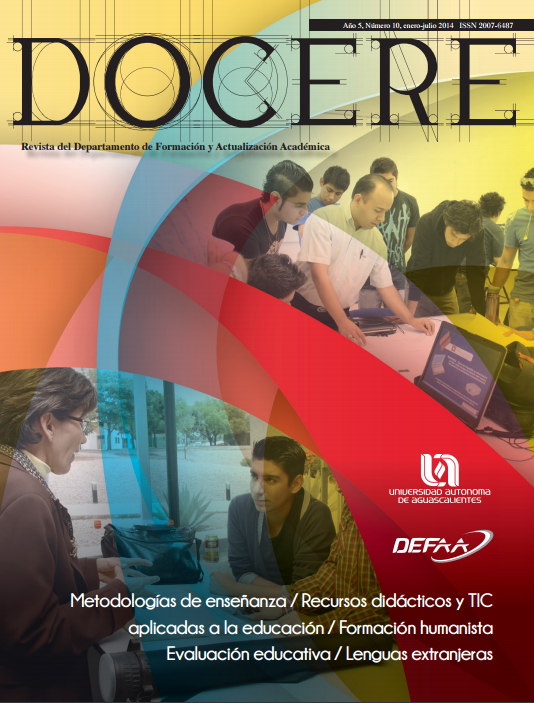The Canvas learning management system: integrating educational philosophy, communication, delivery and tools
DOI:
https://doi.org/10.33064/2014docere102258Keywords:
Collaborative canvas, Canvas, Technology toolsAbstract
Los educadores como diseñadores del aprendizaje primero crean un template environment, el cual es un espacio donde es más probable que el aprendizaje se pueda llevar a cabo, para después guiar a los estudiantes a través de un “viaje nómada” en busca de un objetivo global de aprendizaje. Con este fin, los educadores se benefician al reflexionar sobre una filosofía educativa, el tipo de comunicación utilizada en clase, y la manera de entregar la información colectiva, considerando las herramientas web apropiadas, o tecnologías de la información y la comunicación (TIC) que se pueden emplear.
(Texto completo en el idioma Inglés)
Downloads
Metrics
Downloads
Published
How to Cite
Issue
Section
License
Esta obra está bajo una Licencia Creative Commons Atribución-NoComercial-CompartirIgual 4.0 Internacional.
El lector y/o usuario que utilice el material publicado en la revista DOCERE de la Universidad Autónoma de Aguascalientes, deberá en todos los casos: a) Reconocer la autoría del material utilizado, proporcionando un enlace a la licencia, además de indicar sí se han realizado cambios al material; b) Queda prohibido utilizar el material proveniente de la revista DOCERE, con finalidad comercial y, C) En los casos en los que se realice la remezcla, transformación o creación, a partir del material publicado de la revista DOCERE, se deberá dar reconocimiento de los derechos que correspondan a la Universidad Autónoma de Aguascalientes, en su carácter de titular de la materia protegible utilizada. En caso de infracción a lo antes dispuesto, el lector y/o usuario, se hará acreedor a las sanciones que establece la legislación de la materia.











